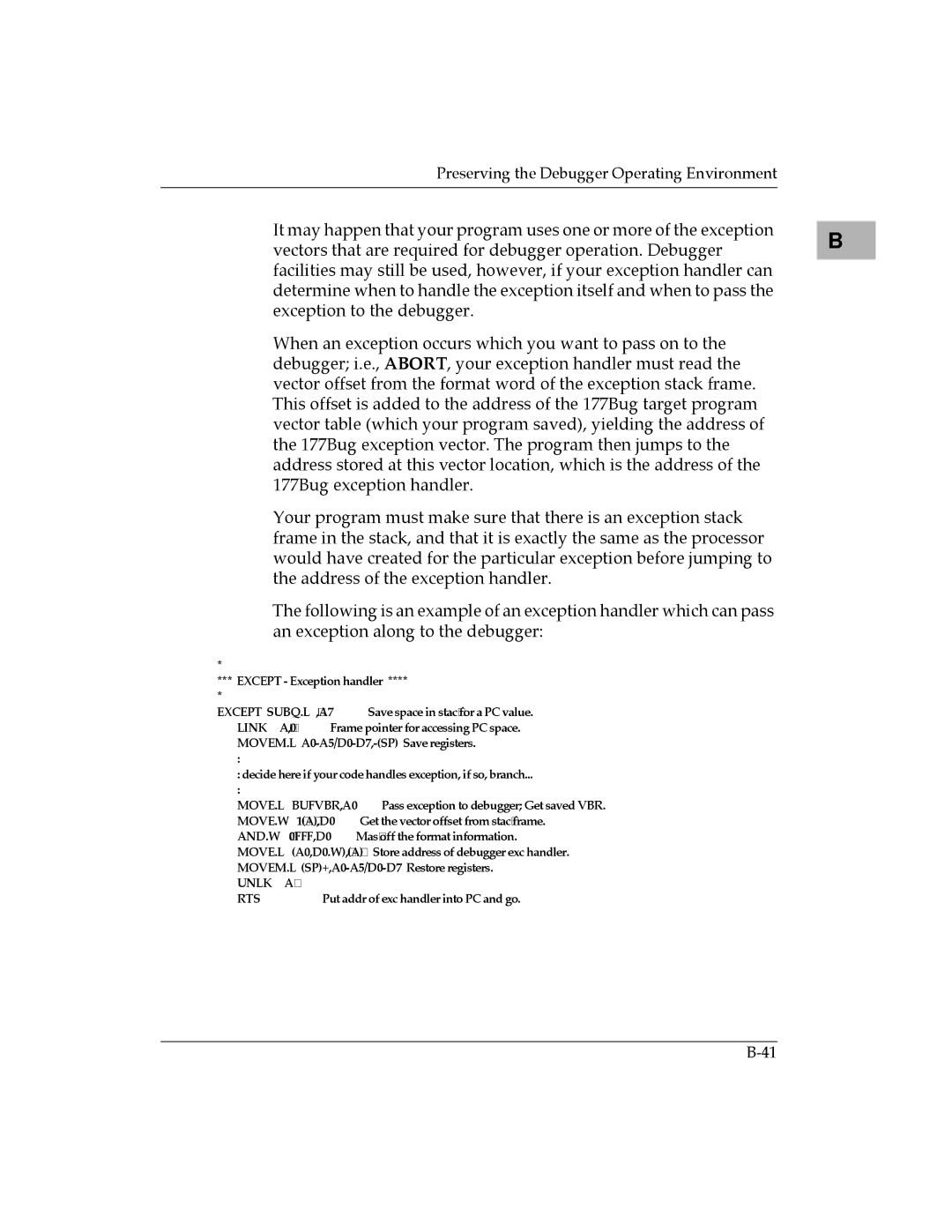
Preserving the Debugger Operating Environment
It may happen that your program uses one or more of the exception vectors that are required for debugger operation. Debugger facilities may still be used, however, if your exception handler can determine when to handle the exception itself and when to pass the exception to the debugger.
When an exception occurs which you want to pass on to the debugger; i.e., ABORT, your exception handler must read the vector offset from the format word of the exception stack frame. This offset is added to the address of the 177Bug target program vector table (which your program saved), yielding the address of the 177Bug exception vector. The program then jumps to the address stored at this vector location, which is the address of the 177Bug exception handler.
Your program must make sure that there is an exception stack frame in the stack, and that it is exactly the same as the processor would have created for the particular exception before jumping to the address of the exception handler.
The following is an example of an exception handler which can pass an exception along to the debugger:
*
***EXCEPT - Exception handler ****
EXCEPT SUBQ.L | #4,A7 | Save space in stack for a PC value. |
LINK | A6,#0 | Frame pointer for accessing PC space. |
MOVEM.L | Save registers. | |
: |
|
|
:decide here if your code handles exception, if so, branch...
MOVE.L | BUFVBR,A0 | Pass exception to debugger; Get saved VBR. |
MOVE.W | 14(A6),D0 | Get the vector offset from stack frame. |
AND.W | #$0FFF,D0 | Mask off the format information. |
MOVE.L | (A0,D0.W),4(A6) | Store address of debugger exc handler. |
MOVEM.L | Restore registers. | |
UNLK | A6 |
|
RTS |
| Put addr of exc handler into PC and go. |
B |
